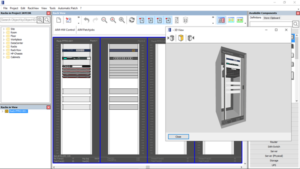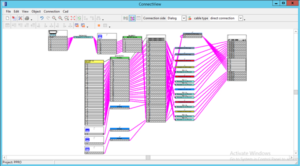Three AV Trends To Watch
Written by Bob Ferguson
You can be an innovator instead of trying to play catch-up when you know what AV technology is coming—and where it may show up. Here’s a short list of what we’re hearing about when it comes to AV trends and the future of the AV industry.
Three AV Trends To Watch:
#1: Technology for Hybrid/Hyflex Spaces
It’s no surprise: The future of the AV industry includes the pivot of work and education to hybrid and online approaches, addressing the practical and logistical challenges of bringing everyone together in person.
According to Statista, nearly one-quarter of K-12 schools rely on hybrid learning. Inside Higher Ed says that three-quarters of college students want to take online courses; 68% are interested in hybrid options. A recent Accenture report reveals that 63% of high-revenue-growth companies embrace hybrid workforce models, and 83% of workers prefer that model as well.
Technologies that can sustain seamless collaboration and productivity in environments that support face-to-face and online interaction will continue to be in demand.
For example:
Streaming rooms equipped with monitors and videoconferencing platforms for team meetings that involve in-office and remote teammates.
Videoconferencing “booths” or huddle rooms for one-on-one hybrid meetings and small impromptu brainstorms.
Interactive learning tools that can support things like polling, chat, screenshare, and virtual breakout rooms.
#2: Wireless Integration
Everyone has become accustomed to the ease and simplicity of wireless connections. With the opening up of the radio spectrum, bandwidth availability has increased dramatically. This additional bandwidth makes wireless an option to support AV applications, and this trend will only continue to impact the future of the AV industry.
Cellular services with 5G bring higher speeds, lower latency (faster responses), and the ability to connect more devices simultaneously without any problems. Through advanced antenna technology, 5G enables much higher levels of data transmission over systems by boosting bandwidth. You can increase this coverage by extending cellular coverage into your building.
Wi-Fi 6 and the 6 GHz band also open up a new spectrum that wasn’t previously part of the unlicensed spectrums. The IEEE 802.11 working group has already released a new standard to take advantage of this new 6 GHz band. It’s called Wi-Fi 6E, an extension of Wi-Fi 6. Wi-Fi 6E devices will operate in the 6 GHz band, giving them access to four times the amount of bandwidth currently offered by Wi-Fi in the 2.4 GHz and 5 GHz bands. As this is adopted in the AV industry, look for AV devices that will take advantage of these benefits.
#3: Continued AV over IP Adoption
Legacy AV systems were designed around input devices (like microphones) and output devices (like speakers). To get systems to work together, other specially designed electronics were necessary to process signals and direct them to the proper location.
AV over IP overcomes many of these challenges by transmitting AV data over a network or the internet. It’s also cost-effective and easily scalable. For this reason, we see the continued growth of AV over IP as another trend that will persist in the future of the AV industry.
AV signals have become digital signals (0s and 1s), and one of the most efficient ways to transmit these 0s and 1s is with Ethernet packets. It isn’t idiotproof yet, but systems have come a long way in addressing latency and bandwidth concerns.
In addition—whether on their own network or part of the building network—AV systems can now take advantage of network diagnostics to troubleshoot problems and reroute signals to keep AV systems up and running.
The other huge advantage of AV over IP is its flexibility and adaptability to change. For example: If you need a flexible space that can accommodate lots of applications, then you can cable the room with Category 6A cabling. From there, changing a patch cable in the telecom rack can deliver AV input or output and even low-voltage power anywhere there’s a jack.
Supporting These Top AV Trends
Don’t let the least expensive part of your AV system be the cause of most system failures. Remember: The success of these AV innovations—hybrid working and learning, 5G/Wi-Fi 6 device integration, and AV over IP—depends on network infrastructure. Increasing numbers of users and devices (wired and wireless) mean that bandwidth and capacity will matter even more to support new technology and applications.
No matter what type of technology is deployed (videoconferencing, unified communications, workplace management apps, etc.), it needs to be supported by high-performance cabling and connectivity.
Not all cables are created equal, so pay attention to the specifications of the cable you select for AV. To ensure excellent performance, you should choose cable from a trusted and respected brand, follow recommended installation practices and use high-quality connectors.
Learn more about the future of the AV industry—or find out if your network infrastructure is set up to support these trends.
Find the original article here








